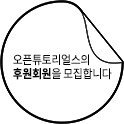Statements and Blocks (문장과 블럭)
An expression such as x = 0 or i++ or printf( ... ) becomes a statement when it is followed by a semicolon, as in
x = 0;
i++;
printf( ... );
In C, the semicolon is a statement terminator, rather than a separator as it is in languages like Pascal.
Braces { and } are used to group declarations and statements together into a compound statement (복합문), or block, so that they are syntactically equivalent to a single statement. The braces that surround the statements of a function are one obvious example; braces around multiple statements after an if, else, while, or for are another. (Variables can be declared inside any block; we will talk about this in Chapter 4.) There is no semicolon after the right brace that ends a block.
[The C Programming Language p.55]

